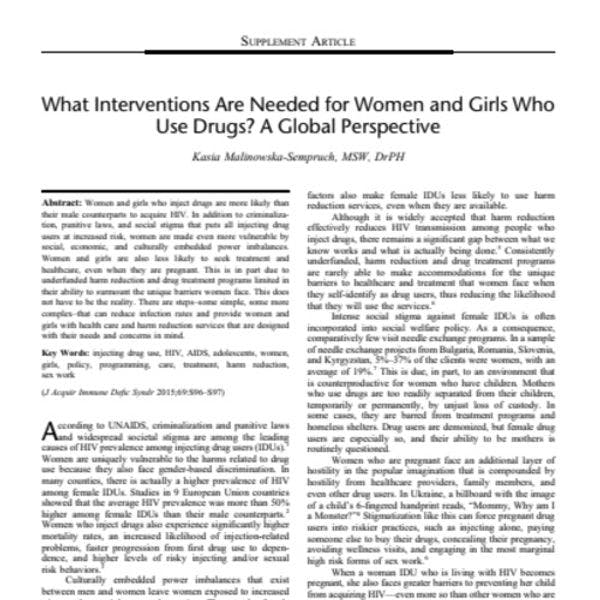What interventions are needed for women and girls who use drugs?
Women and girls who inject drugs are more likely than their male counterparts to acquire HIV.
In addition to criminalization, punitive laws, and social stigma that puts all injecting drug users at increased risk, women are made even more vulnerable by social, economic, and culturally embedded power imbalances. Women and girls are also less likely to seek treatment and healthcare, even when they are pregnant. This is in part due to underfunded harm reduction and drug treatment programs limited in their ability to surmount the unique barriers women face. This does not have to be the reality.
There are steps–some simple, some more complex–that can reduce infection rates and provide women and girls with health care and harm reduction services that are designed with their needs and concerns in mind.
In every country, women experience discrimination through laws and policies, gender-based stereotypes, and social norms and practices. These vulnerabilities are compounded by the exclusion and stigmatization of drug use. As a result, women's ability to exercise choice and claim their rights to support and protection are significantly challenged.
In effect, the social stigma, shame, and discrimination that accompany drug use function as tools of women's further oppression. Harm reduction programs cannot change how society views women who use drugs, but they can positively influence how they view themselves, help them to regain their independence, and in so doing, save their lives.
Keep up-to-date with drug policy developments by subscribing to the IDPC Monthly Alert.
